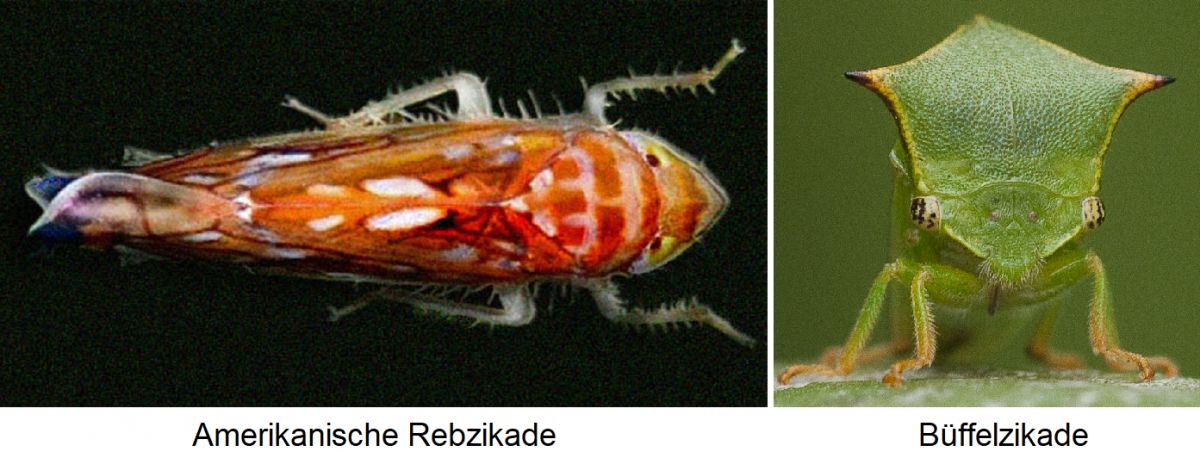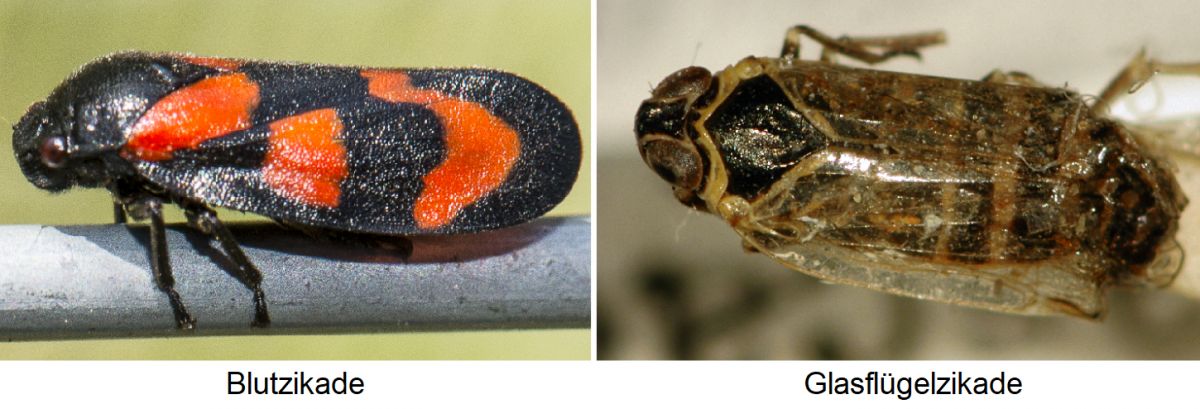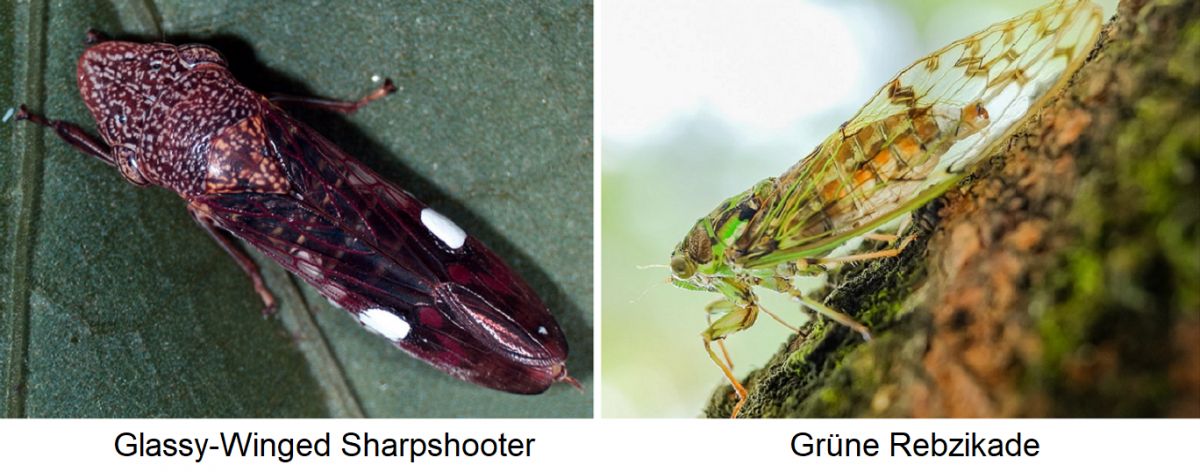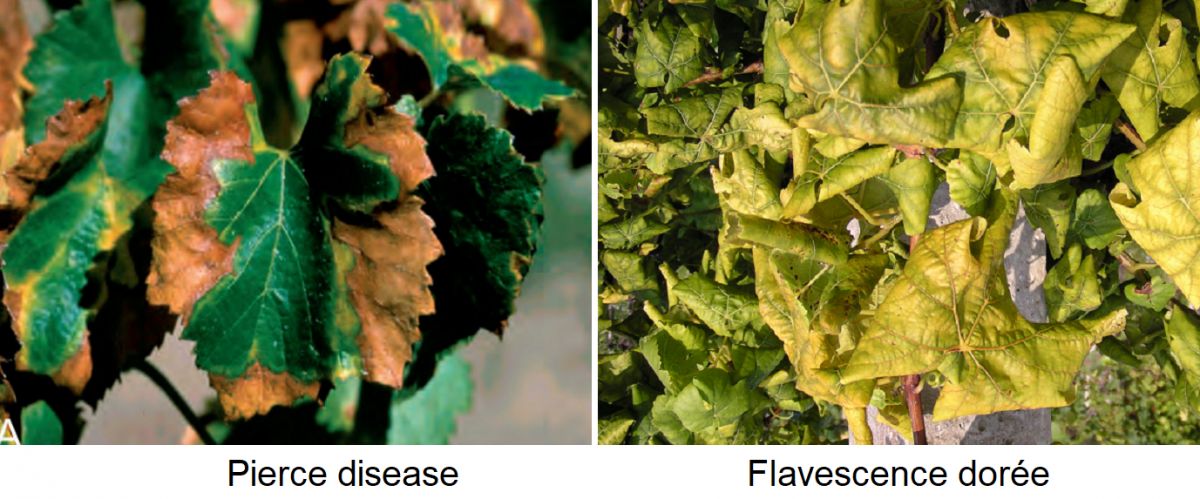Species-rich family (Auchenorrhyncha) of insects, also called "chirps" because of the characteristic sound. Most of the approximately 40,000 species are very strikingly coloured. All of them have a proboscis and a sucking pump for feeding, which is done by piercing and sucking out certain parts of the plant. Most species are restricted or specialised to very specific food plants. The body length is usually between 2 and 40 millimetres, in a few species up to 70 millimetres. Because of their jumping ability (hence leafhoppers), they are often confused with grasshoppers, to which they are not related. They can jump up to 70 centimetres from a standing position. In comparison, a human being would have to jump 200 metres.
Many phloem-sucking cicadas are plant pests. The pests bite the leaf veins and suck up the sugary sap of the phloem in the leading tissue. In the process, phytoplasmas and viruses are transmitted, which then cause very dangerous vine diseases such as flavescence dorée and pierce disease. A suction track or typical leaf damage pattern of the blood cicada can be seen on the bottom right. The appearance is similar for other cicada species.
Cicada species
The following cicada species can occur on grapevines and cause the damage mentioned above:
American grapevine cicada
The American grapevine cicada (Scaphoideus titanus) causes flavescence dorée (golden yellowing); see there.
Buffalo cicada (humpbacked cicada)
The bright green buffalo cicada or humpbacked cicada (Strictocephala bisionia) was introduced from North America at the end of the 19th century, presumably with fruit rices, and has proliferated in Europe. Their eggs overwinter in one-year-old shoots of grapevines. The parts of the plant above the egg-laying sites usually die. The young animals (nymphs) develop over five stages into adult cicadas. The egg-laying and sucking activity introduces substances into the cell tissue of the plants. These lead to growths and finally, by interrupting the flow of sap, to the death of overlying shoot parts and yellowing of the leaves similar to the flavescence dorée symptoms.

Blood cicada (foam cicada)
The blood cicada or foam cicada (Cercopis vulnerata) is conspicuously black-red in colour. The larvae live in self-produced foam shells (cuckoo saliva). They feed by piercing and sucking out certain parts of the plant, which causes brown spots. However, these hardly cause any damage, so that control is unnecessary.
Glass-winged cicada
The glass-winged cicada (Hyalesthes obsoletus) is the vector of the yellowing disease of the Stolbur type (also called blackwood disease because of the typical damage pattern); see there.

Glassy-Winged Sharpshooter
The cicada species Glassy-Winged Sharpshooter (Homalodisca vitripennis) causes the dreaded vine disease Pierce Disease (golden yellowing) by transmitting phytoplasmas; see there.
Green vine cicada
The green vine cicada (Empoasca vitis) occurs as a pest in the vineyard, but no bacteria or viruses are transmitted. A stronger infestation can be observed after several warm and dry years. After budbreak, the fertilised females lay their eggs in the leaf veins. From May to June, the larvae of the first generation hatch and stay mainly on the undersides of the leaves, where they suck. The berries are soiled by the sugar-rich excrement (honeydew), which serves as food for other insects. The infested leaf areas turn characteristically light green to yellowish (white varieties) or strikingly dark red (red varieties). The leaves curl up; the symptoms are similar to those of leafroll disease or potassium deficiency. Control is only necessary in case of heavy infestation.

Oriental cicada (mosaic cicada)
The Oriental cicada (Orientus ishidae) or mosaic cicada is easily identified by the mosaic-like pattern of the forewings. By sucking on leaves and stems, it causes the dreaded vine disease Pierce Disease (golden yellowing) by transmitting phytoplasmas (as by Glassy-Winged Sharpshooter).
Pointed-headed cicada
The pointed-headed cicada is still insufficiently researched; a relationship to the grapevine is not known.

Control
If necessary, cicadas are controlled with insecticides. A natural enemy is the wasp "Anagrus atomus", which parasitises the eggs. See also a list of all pests under vine enemies.

Amer. Vine cicada: From Lamiot - Eig. plant, CC BY-SA 3.0, Link
Buffalo cicada: André Mégroz www.insects.ch
Blood cicada: André Mégroz www.insects.ch
Glass-winged Cicada: By Michael F. Schönitzer, CC-BY-SA 4.0, Link
Glassy-Winged Sharpshooter: By Reyes Garcia III, Link
Green Vine Cicada: PIXABAY - Over a million free images
Oriental Cicada: Michael Stemmer www.naturraum-stux.de
Pierce disease: ©enbiotech s.r.l.
Flavescence dorée: AGES Vienna
Voices of our members

I have great respect for the scope and quality of the wein.plus encyclopaedia. It is a unique place to go for crisp, sound information on terms from the world of wine.
Dr. Edgar Müller
Dozent, Önologe und Weinbauberater, Bad Kreuznach